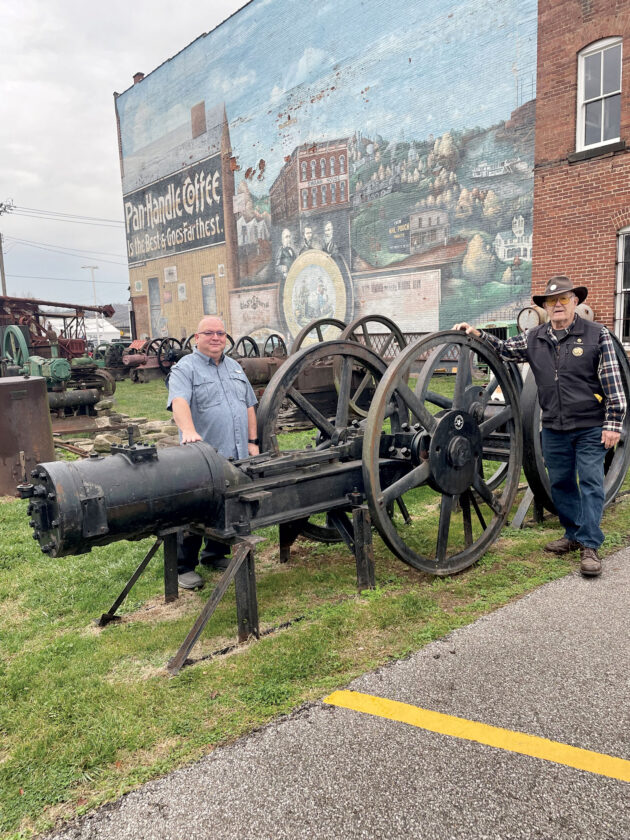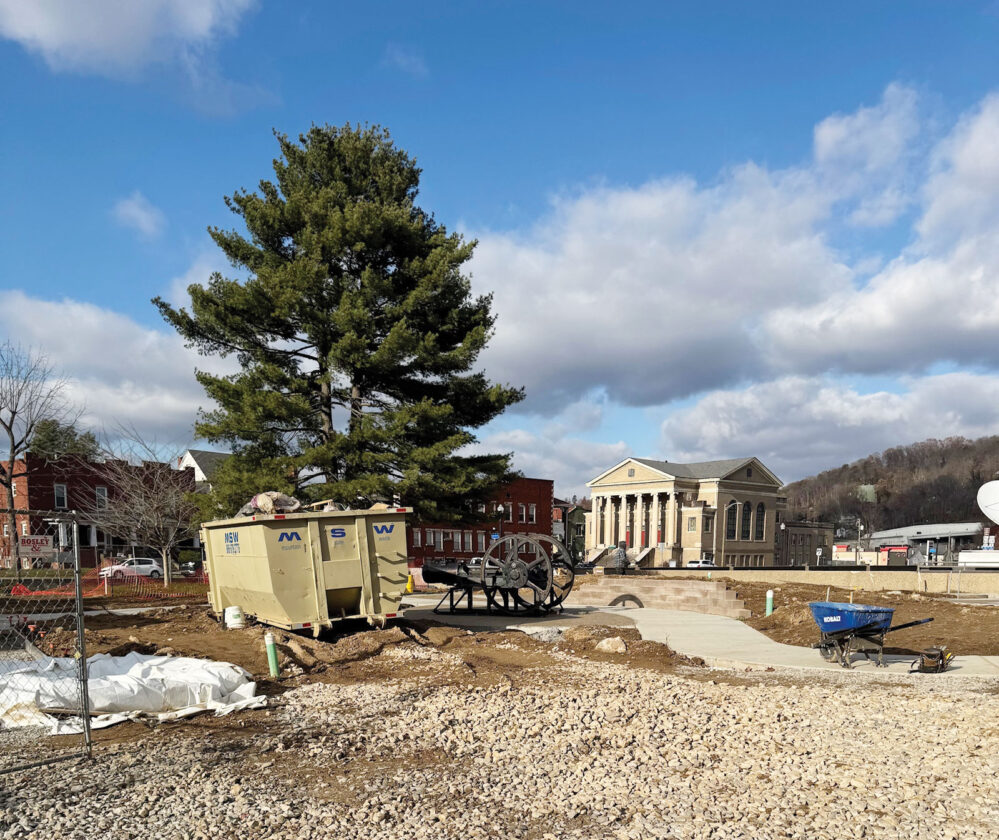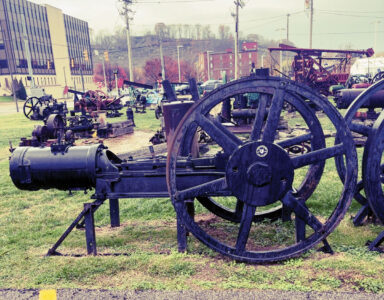Drilling into History: Oil and Gas Museum engine on display at West Virginia Capitol
- Mike Daley, West Virginia Division of Highways District 3 Manager, with Paul Hoblitzell, Museums of the Mid-Ohio Valley board president, with the engine being donated to the state museum. (Photo Provided)
- The South Penn half breed engine at its new location. (Photo Provided)
- The South Penn half breed engine in the exhibit on Julianna Street next to the Oil and Gas Museum. (Photo Provided)

Mike Daley, West Virginia Division of Highways District 3 Manager, with Paul Hoblitzell, Museums of the Mid-Ohio Valley board president, with the engine being donated to the state museum. (Photo Provided)
PARKERSBURG — An engine and other artifacts used in West Virginia oil fields have been donated by the Museums of the Mid-Ohio Valley, operators of the Oil and Gas Museum, for a new outdoor exhibit at the Capitol in Charleston.
The engine will be included in the West Virginia: Nature Designs a State that Fuels a Nation on the Capitol grounds that features agriculture, chemicals, clay, coal, iron and steel, oil and gas, railroads, salt, timber and water.
“We’re proud to donate the engine, along with a number of other items, including a yellow dog,” Paul Hoblitzell III, president of Museums of the Mid-Ohio Valley, said.
“The new exhibit will highlight the role of Parkersburg and the oil industry in the founding of the State and economic development,” Hoblitzell said. “This is where it all began for the oil and gas industry, and the beginnings of our succession from Virginia.”
The donated engine was transported in November by the Department of Highways from the Oil and Gas Museum yard in Parkersburg to the Capitol grounds in Charleston. Waco Oil & Gas of Glenville several yeas ago donated the engine to the Oil and Gas Museum.

The South Penn half breed engine at its new location. (Photo Provided)
The engine, a South Penn half breed, a broad term used for a range of steam engines modified to run on natural gas. South Penn was a prominent oil company throughout West Virginia.
Such engines were extensively used in West Virginia oil fields from the late 1800’s well into the 1900’s, with some engines in use in the 1980’s. The common pictures of wooden oil derricks seen in old oil boom pictures, leaves out a most important component, the engine that powers it all.
The drilling process needed a powerful engine that steam provided. Initially, steam also was used to power oil rigs for servicing and pumping wells, however, as the production and associated activity settled down, firing steam boilers and “getting up steam” to run engines, became a time-consuming effort, especially for individual wells with varied pumping rates.
Natural gas engines were patented during the late 1890’s that enabled relatively quick start up and shut down for each well. With this change in well operation, South Penn would have a quantity of steam engines that were surplus and were ideal to convert to natural gas by deleting the steam cylinder and adding a natural gas cylinder and a reversing clutch.
Conversion cylinders were built by South Penn at its location near Clarksburg. They were added to the earlier Oil City Boiler Works frame and flywheels, built in Oil City, Pa.

The South Penn half breed engine in the exhibit on Julianna Street next to the Oil and Gas Museum. (Photo Provided)
This engine was rated at 20 horsepower and was suited for wells between 1,500 and 2,500 feet deep.
Also built in Clarksburg was a larger South Penn engine rated at 25 HP, not a half breed, but completely built at the Clarksburg factory. At the Oil and Gas Museum, South Penn Engine wooden casting patterns are on display, which came from the Clarksburg South Penn Shop. South Penn Oil Co. became Pennzoil in a merger in 1963.
The Oil and Gas Museum’s collection includes engines, drilling rigs and other equipment and tools used in the region’s oil fields since the early 1800s. Its industrial displays on the second floor include many of the early makers of the tools needed in the oil fields.
The Oil and Gas Museum, formerly W.H. Smith Hardware, houses other regional history displays and is open Monday through Friday, 11-4 p.m. Monday-Friday and opens at noon on Saturdays and Sunday.









